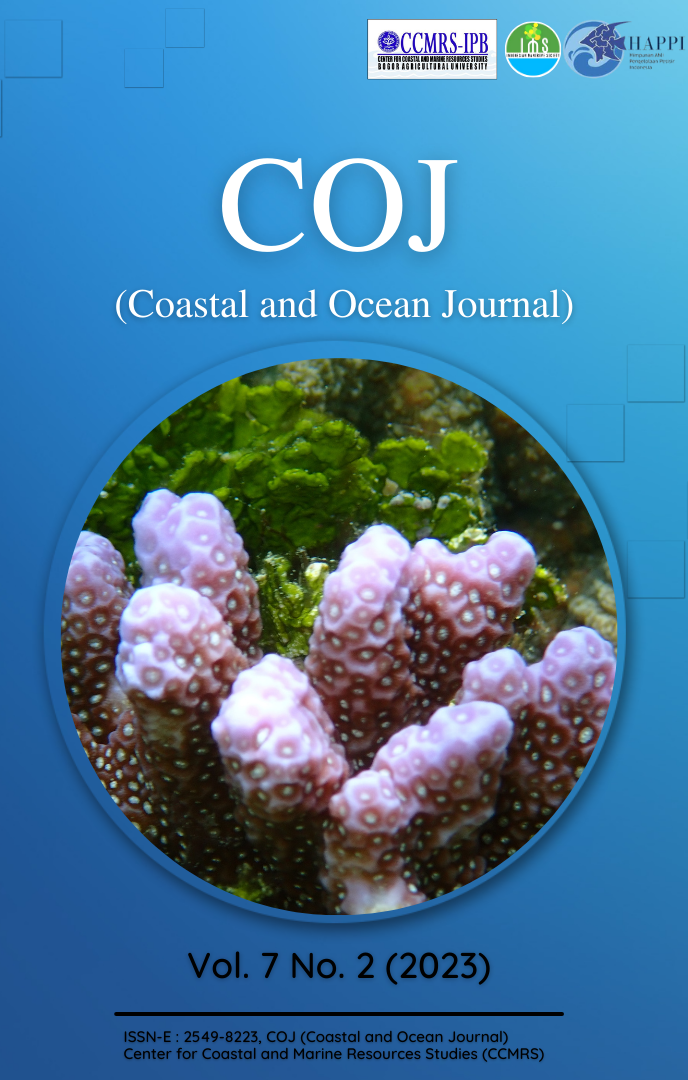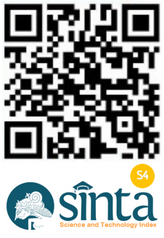ECONOMIC ANALYSIS OF COMMUNITY SALT INDUSTRY DEVELOPMENT IN INDRAMAYU DISTRICT
ABSTRACT
Abstract
, but the number of domestic production is insufficient so the country imports it. Indramayu is one of Districts in West Java Province that produces salt. Production technologies applied in Indramayu District are: traditional, geomembran, bestekin, and DJ. This research aims to: analyze the feasibility of salt business, analyze the comparative use of technology, identify the determinants of smallholder salt production, and review the technology alternative in developing the people’s salt industry. The research method is survey and method of analyses are business feasibility analysis, comparative analysis, multiple linear regression analysis, and Comparative Performance Index (CPI). The result shows the The results showed the greatest benefit received by the farmer with technology bestekin IDR 396,000,000 per year. Based on the financial analysis NPV value of owned the biggest DJ technology amounting to IDR 1,016,456,247. The value Net B/C and the value of the IRR of the traditional technologies is 4 and 70.7%. Time the fastest return on investment than geomembran technology users is 2.0 years. The biggest R/C value from technology bestekin of 2.1. The value of the largest BEP unit is geomembran technology of 82.6 tons, and the value of the BEP rupiah is technology bestekin amounting to IDR 144,939,759. land area, age, and the amount of windmill, whereas t the amount of land area, labor, and geoisolator plastic. The determinants of bastekin and DJ technology could not be analyzed because It was done only by 1 respondent. The best alternative use of technology for salt production is DJ technology. Its performance index 312.78.
Downloads
References
[BPS] Badan Pusat Statsitika. 2015. Distribusi Perdagangan Komoditi Garam Indonesia 2014. Jakarta (ID): Badan Pusat Statistika Republik Indonesia.
Gittinger JP. 2008. Analisis Ekonomi Usaha-Usaha Pertanian. Mangiri K dan Sutomo S, penerjemah. Jakarta (ID): Universitas Indonesia Press.
Gujarati. 1993. Ekonometrika Dasar. Zain S, penerjemah. Jakarta (ID): Airlangga.
Irawan A, Astuti SP. 2006. Mengolah Data Statistik dengan Mudah Menggunakan Minitab 14. Yogyakarta (ID): Andi Offset.
[KKP] Kementerian Kelautan dan Perikanan. 2015. Laporan Kinerja Kementerian dan Kelautan Perikanan tahun 2014. Jakarta (ID): Kementerian Kelautan dan Perikanan.
Kusumastanto T. 2003. Pemberdayaan sumberdaya kelautan, perikanan dan perhubungan laut dalam abad XXI. Bogor (ID): Pusat Kajian Sumberdaya Pesisir dan Lautan, Institut Pertanian Bogor.
Marimin, Maghfiroh N. 2010. Aplikasi Teknik Pengambilan Keputusan dalam Manajemen Rantai Pasok. Bogor (ID): IPB Press.
Nababan BO, Kusumastanto T, Adrianto L, Fahrudin A. 2020a. Analisis Ekonomi Alat Penangkapan Ikan Arad Di Pantai Utara Provinsi Jawa Tengah. Jurnal Sosial Ekonomi Kelautan dan Perikanan. Volume 15 No. 1 Tahun 2020. E-ISSN: 2527-4805. Kementerian Kelautan dan Perikanan.
Nababan BO, Christian Y, Afandy A, Damar A. 2020b. Integrated Marine and Fisheries Center and priority for product intensification in East Sumba, Indonesia. IOP Conf. Series: Earth and Environmental Science 414 (2020) 012014. IOP Publishing. doi:10.1088/1755-1315/414/1/012014
Rismana E, Nizar. 2014. Kajian proses produksi garam aneka pangan menggunakan sumber beberapa bahan baku. J Chem Prog. 7(1):25-28.
Silalahi U. 2009. Metode Penelitian Sosial. Bandung (ID): PT Refika Aditama.
Sucipto A. 2011. Studi Kelayakan Bisnis Analisis Integratif dan Studi Kasus. Malang (ID): UIN-Maliki Press.
Sutojo S. 1983. Studi Kelayakan Proyek. Jakarta (ID): PT. Pustaka Binaman.
Utami AW, Jamhari, Hardyastuti S. 2011. El Nino La Nina dan penawaran pangan di Indonesia. JEKP. 12(2):257-271.
Winarno W. 2011. Analisis Ekonometrika dan Statistika dengan Eviews. Yogyakarta (ID): UPP STIM YKPN.







